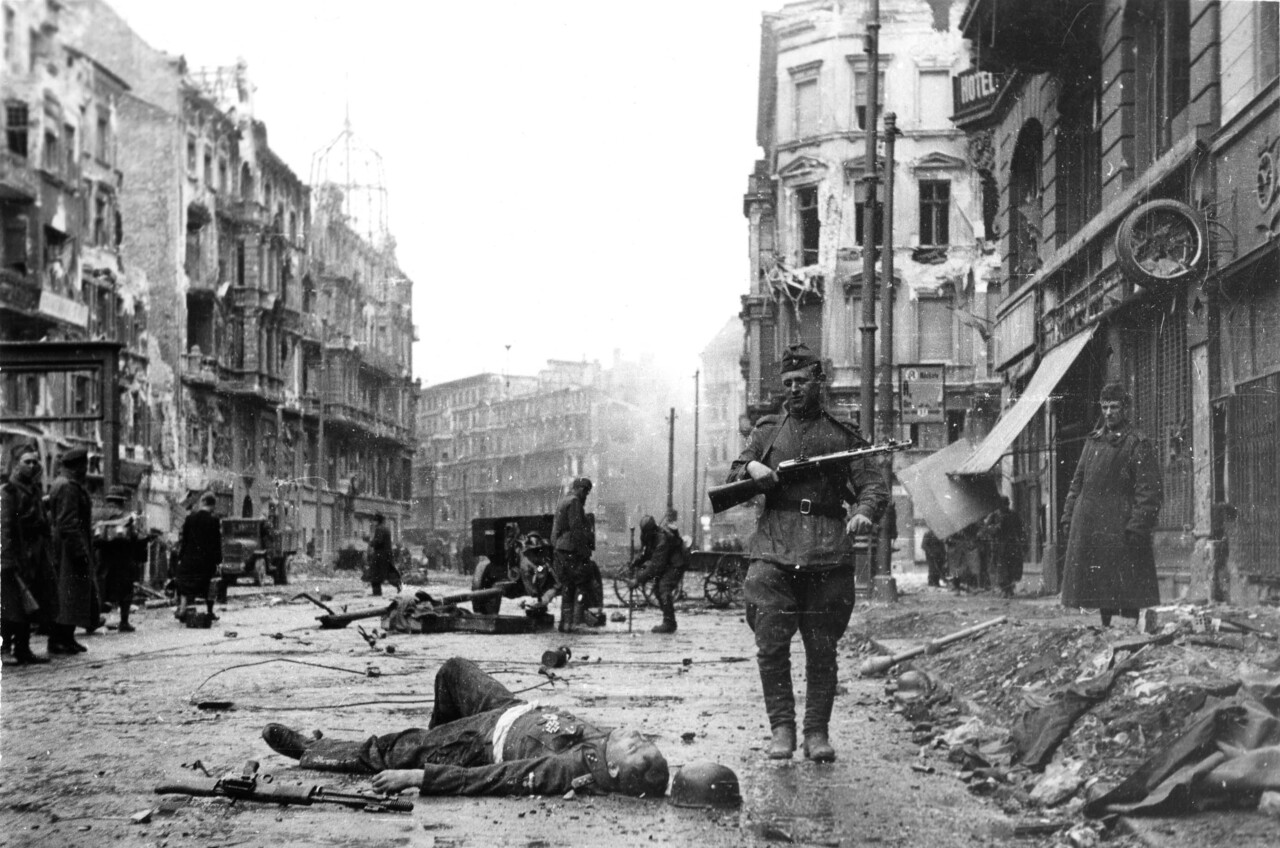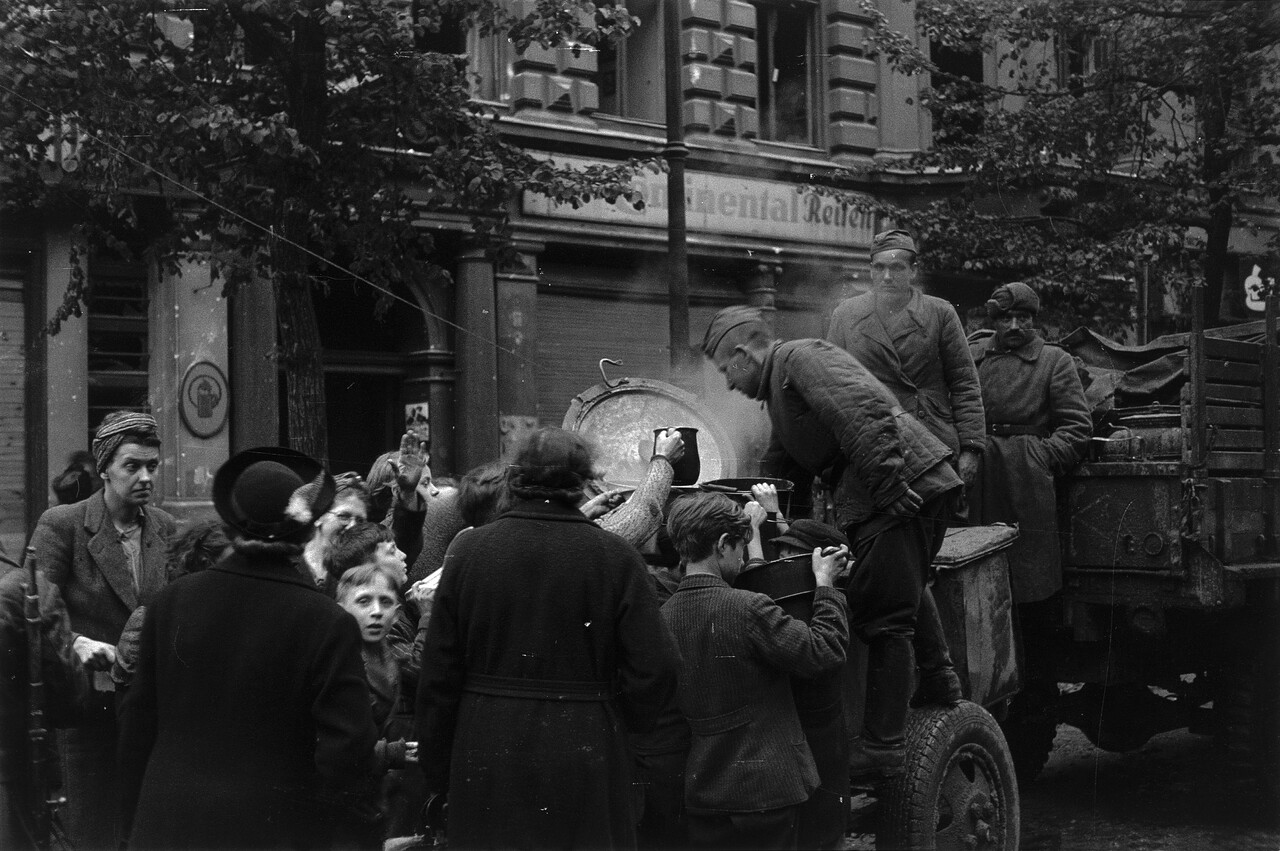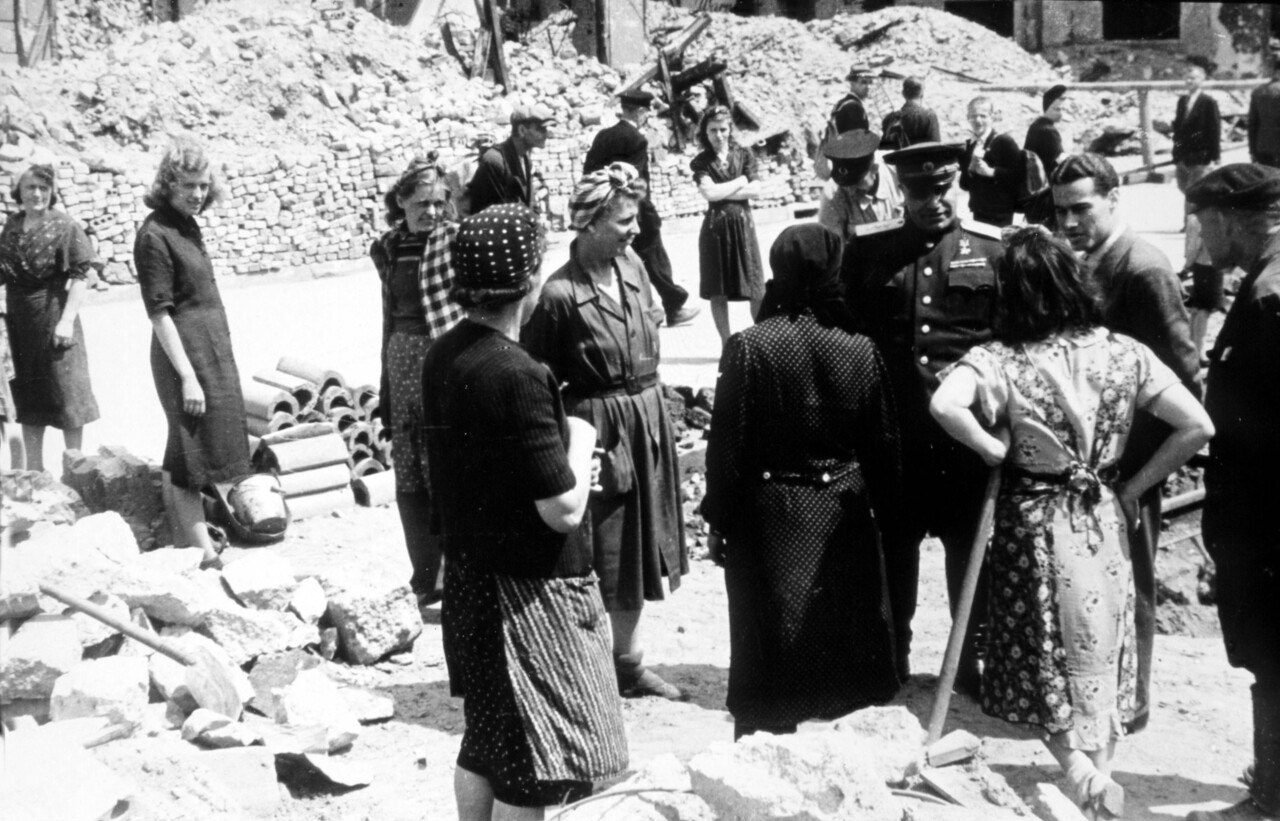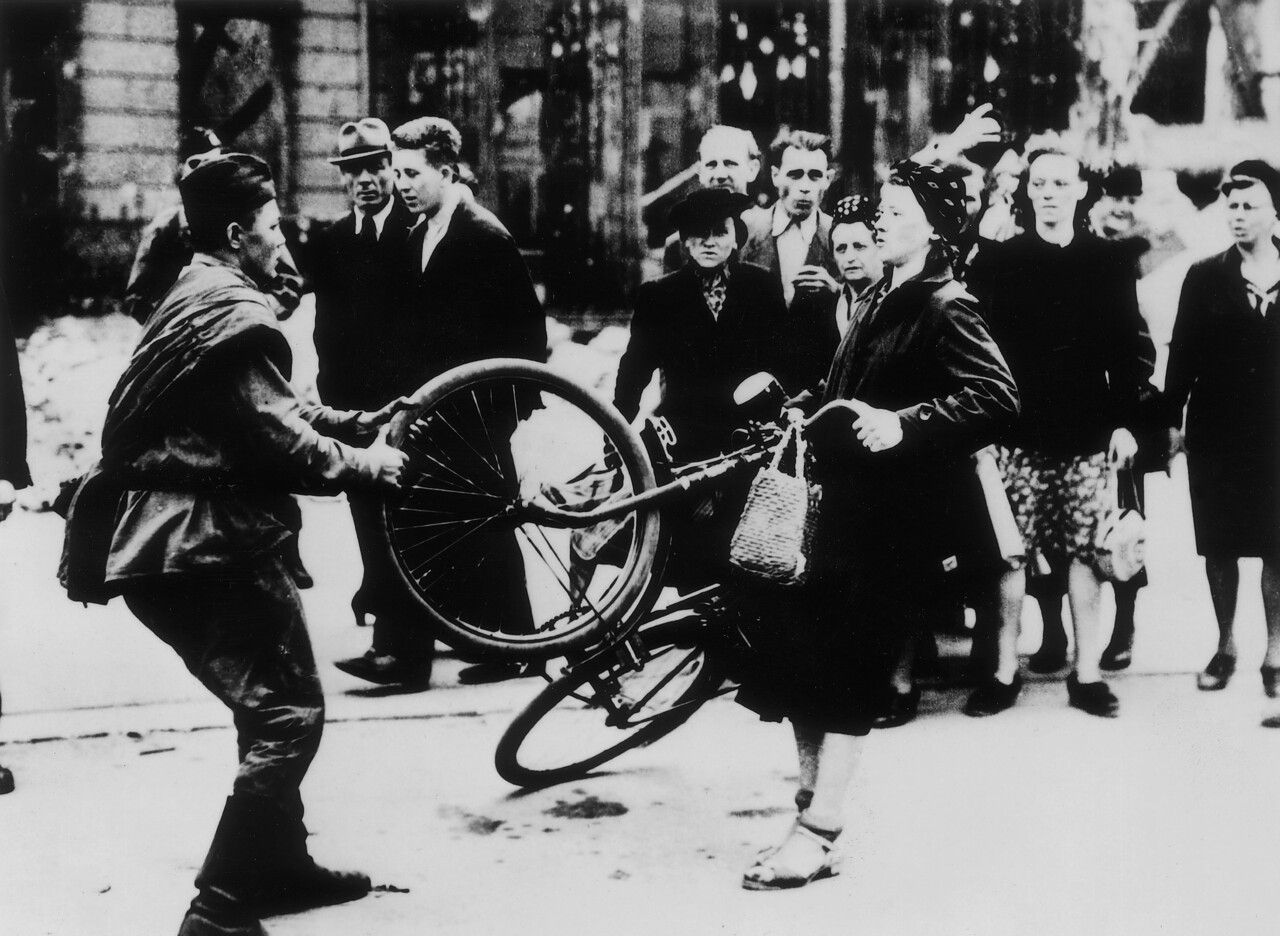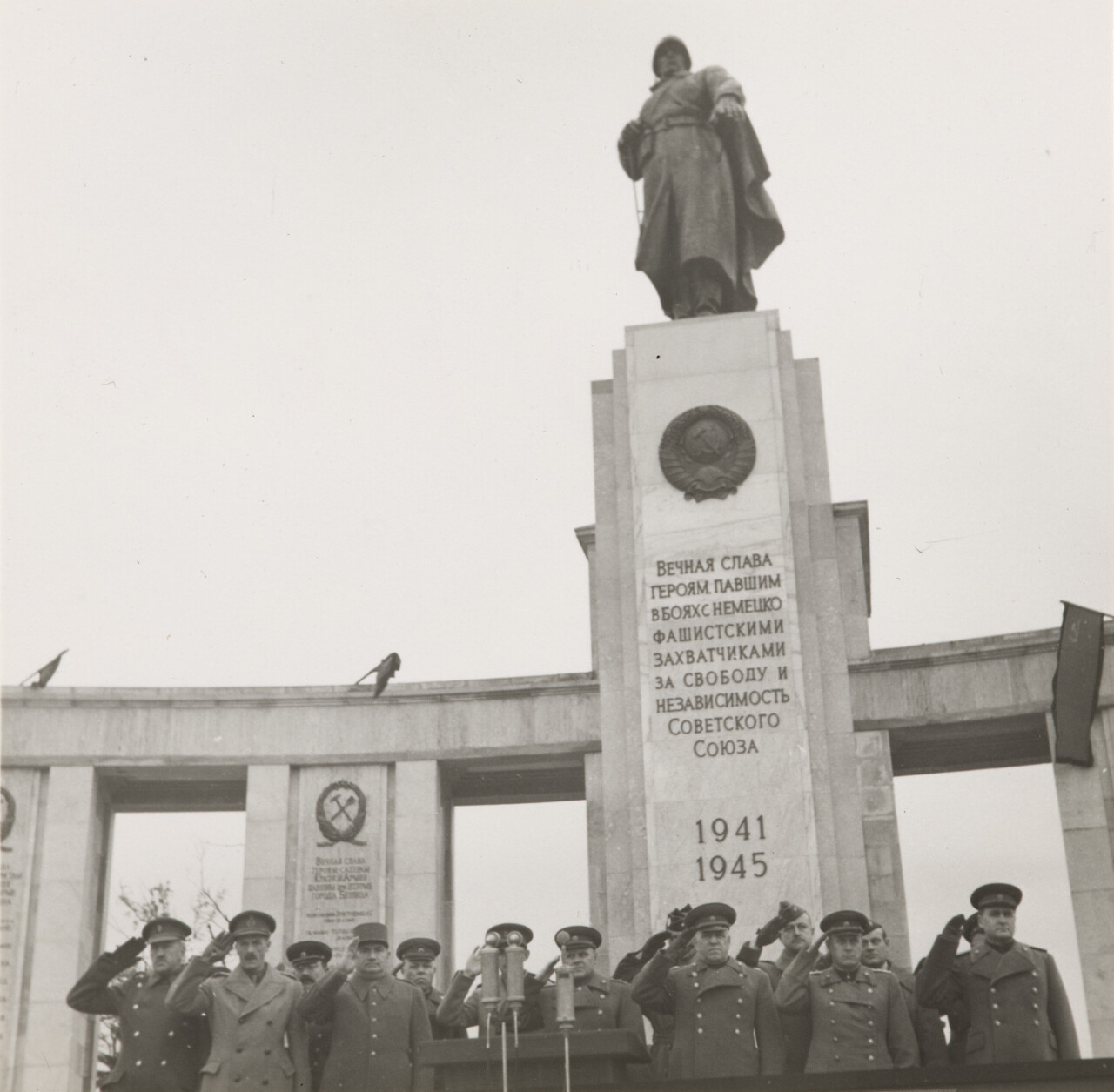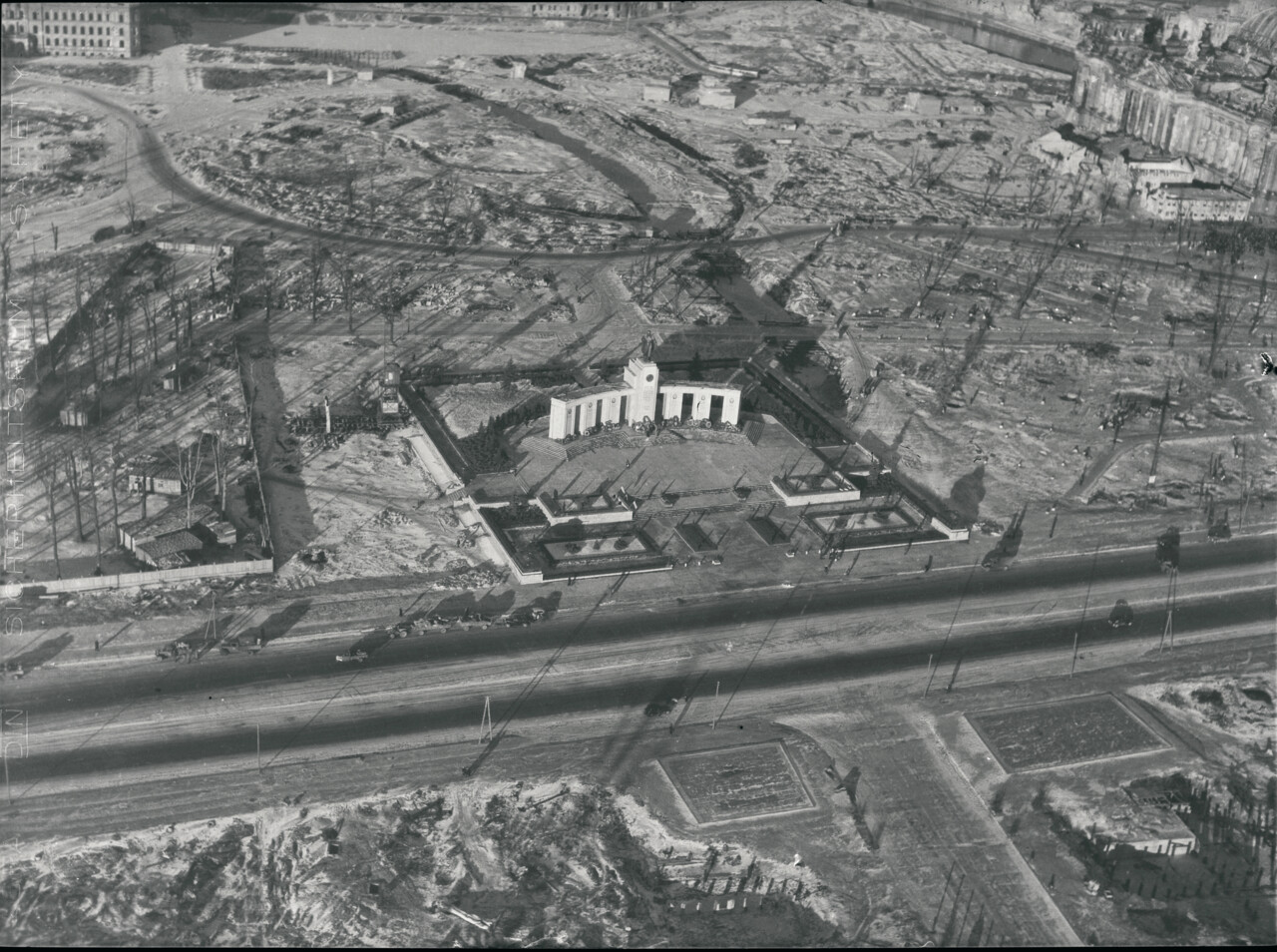»The Russians are here ...« – Berlin under Soviet Occupation
After years of German war of extermination in the Soviet Union, the advance of the Red Army into Reich territory is accompanied by acts of revenge such as looting and arbitrary shootings. Berlin also experienced a wave of violence in April and May 1945. About 120,000 women and girls were victims of rape. However, city commander Nikolai Bersarin (1904 – 1945) managed to win over the Berlin population in the following weeks. Initially, he organised the supply of food. Just two weeks after the capitulation, hospitals and food businesses, public transport and many administrative offices were back in operation. At the same time, the Soviets dismantled entire industrial plants and transported them – as well as looted artefacts and arrested specialists – to the East. Reconstruction begins with clearing and demolition work, but also with a broad cultural programme and support for the rebuilding of the Jewish community in Berlin. At the same time, the Soviets installed a communist regime modelled on Moscow in their occupation zone with the group around Walter Ulbricht (1893 – 1973). From the summer of 1945, the NKVD secret service operated Special Camp No. 7 in Sachsenhausen near Berlin, where around 12,000 people perished by 1950.
Berlin-Tiergarten, 11 November 1945: Dedication of the Soviet memorial on Charlottenburger Chaussee (today: Strasse des 17. Juni) with up to 2,500 soldiers' graves in the presence of the Allied city commanders and the Chief of Staff of the Red Army, Marshal Georgy Zhukov (1896 – 1974).
Imperial War Museum, London, BU 11678
